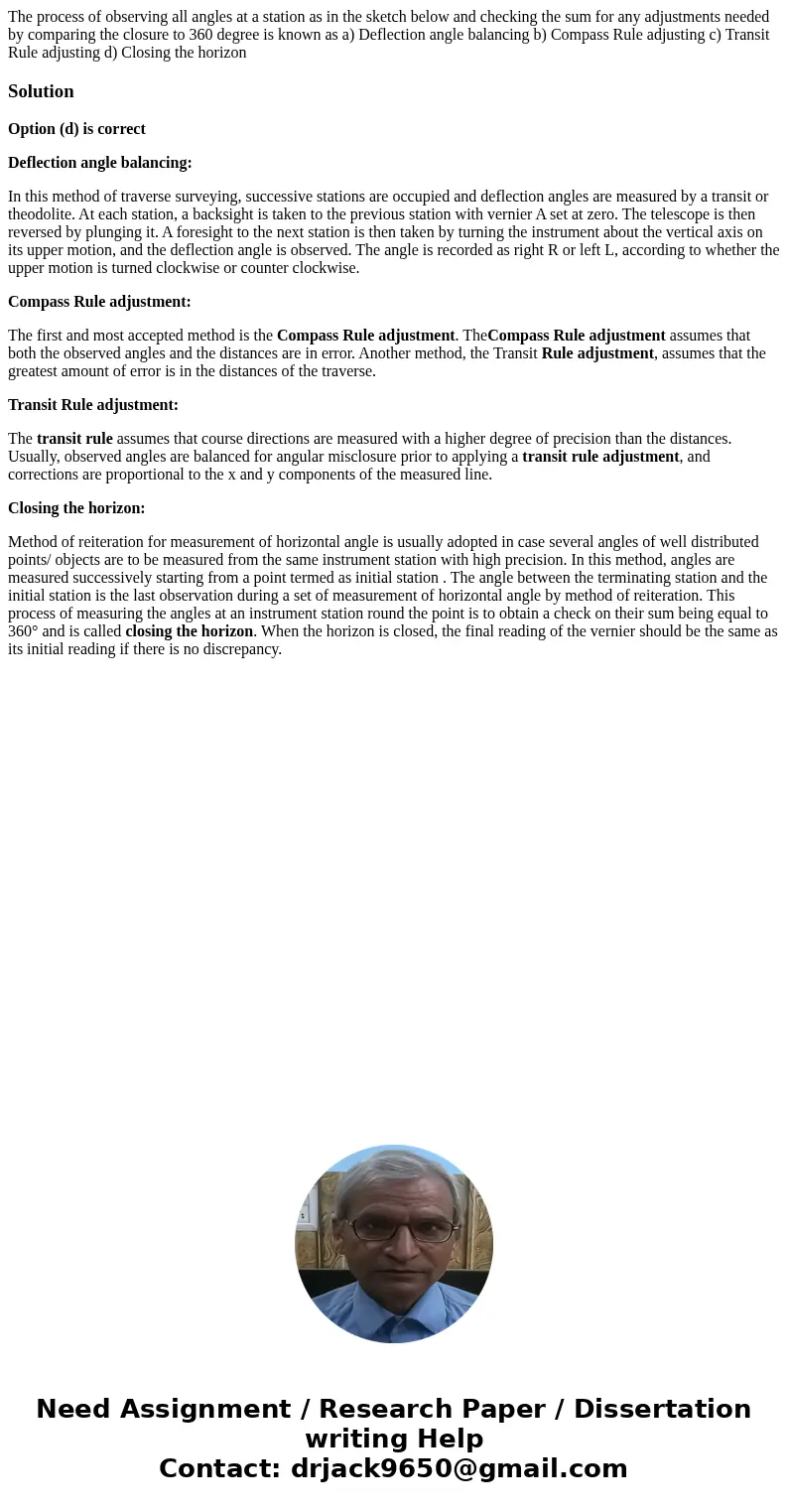The process of observing all angles at a station as in the s
Solution
Option (d) is correct
Deflection angle balancing:
In this method of traverse surveying, successive stations are occupied and deflection angles are measured by a transit or theodolite. At each station, a backsight is taken to the previous station with vernier A set at zero. The telescope is then reversed by plunging it. A foresight to the next station is then taken by turning the instrument about the vertical axis on its upper motion, and the deflection angle is observed. The angle is recorded as right R or left L, according to whether the upper motion is turned clockwise or counter clockwise.
Compass Rule adjustment:
The first and most accepted method is the Compass Rule adjustment. TheCompass Rule adjustment assumes that both the observed angles and the distances are in error. Another method, the Transit Rule adjustment, assumes that the greatest amount of error is in the distances of the traverse.
Transit Rule adjustment:
The transit rule assumes that course directions are measured with a higher degree of precision than the distances. Usually, observed angles are balanced for angular misclosure prior to applying a transit rule adjustment, and corrections are proportional to the x and y components of the measured line.
Closing the horizon:
Method of reiteration for measurement of horizontal angle is usually adopted in case several angles of well distributed points/ objects are to be measured from the same instrument station with high precision. In this method, angles are measured successively starting from a point termed as initial station . The angle between the terminating station and the initial station is the last observation during a set of measurement of horizontal angle by method of reiteration. This process of measuring the angles at an instrument station round the point is to obtain a check on their sum being equal to 360° and is called closing the horizon. When the horizon is closed, the final reading of the vernier should be the same as its initial reading if there is no discrepancy.

 Homework Sourse
Homework Sourse